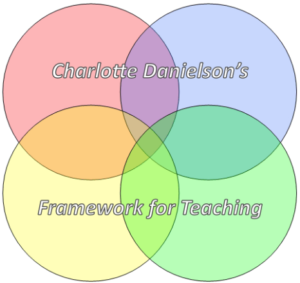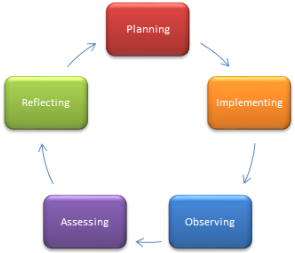Preparing for an Observation
Several times during the student teaching experience, a college supervisor will observe recorded lessons taught by the student teacher. The main purpose of these observations is to encourage interns in their professional development; promote reflection; identify problem areas; set goals that support change; and assist in the transition from student teacher to teaching professional. The student teacher should not feel extra pressure to “perform” during the observation. Rather, they plan and prepare in the same way that is done each day for classes.
The supervisor will complete the Clinical Observation College Supervisor Report, which he or she will discuss with the student teacher.
The college supervisor will meet with the student teacher and cooperating teacher individually (or together) and may also meet with an administrator.
This same procedure will be used during subsequent observations. The college supervisor and cooperating teacher(s) will consider areas of strength noted and goals set for areas in need of growth when providing the student teacher with feedback. Specific goals and steps by which to meet those goals can be documented on the observation form. These goals would be areas of focus in future observations by the college supervisor so that growth can be acknowledged.

Observation Evaluations
College supervisors use an adapted version of Charlotte Danielson’s Framework for Teaching (2013) as the framework for their observations. Charlotte Danielson is internationally recognized for her work in teacher effectiveness, specializing in designing observation professional learning. The Framework is used by many school districts around the country as the model for teacher evaluation.
Charlotte Danielson’s framework, as articulated in Enhancing Professional Practice: A Framework for Teaching (Danielson, 2007), is based on a body of research that seeks to identify principles of effective practice and classroom organization.
The framework is grounded in a constructivist approach to learning and teaching. Students will be engaged in their learning processes and the application of that knowledge is the unifying thread that runs through the entire framework. The teacher’s role is to create an environment for productive learning in which the teacher and students participate in generating and sharing knowledge.
Danielson’s framework is a structure that educators can use to research their actions. In the framework, the activity of teaching is clustered into four domains of teaching responsibility divided into 22 components identified in the Student Teacher Handbook.

We trust that by using such an assessment tool, our candidates will be ready for evaluation as teachers. The Framework for Teaching provides a comprehensive picture of teaching and a common language for instructional planning and improvement dialogue. The Framework enhances the validity and reliability of the planning, reflection, observation, and evaluation tools used in Trinity’s education program.
Below is the form to be used for each clinical classroom observation. This form is not the formal evaluation.
Because Professional Responsibilities (Domains 4) /Professional Dispositions are not observable, this domain is not part of the observation evaluation.
By using the language within the Framework for Teaching in discussions with the intern, the connection between the Framework for Teaching and effective practices in planning and preparation, classroom environment, instruction, and professional responsibilities are clear.
